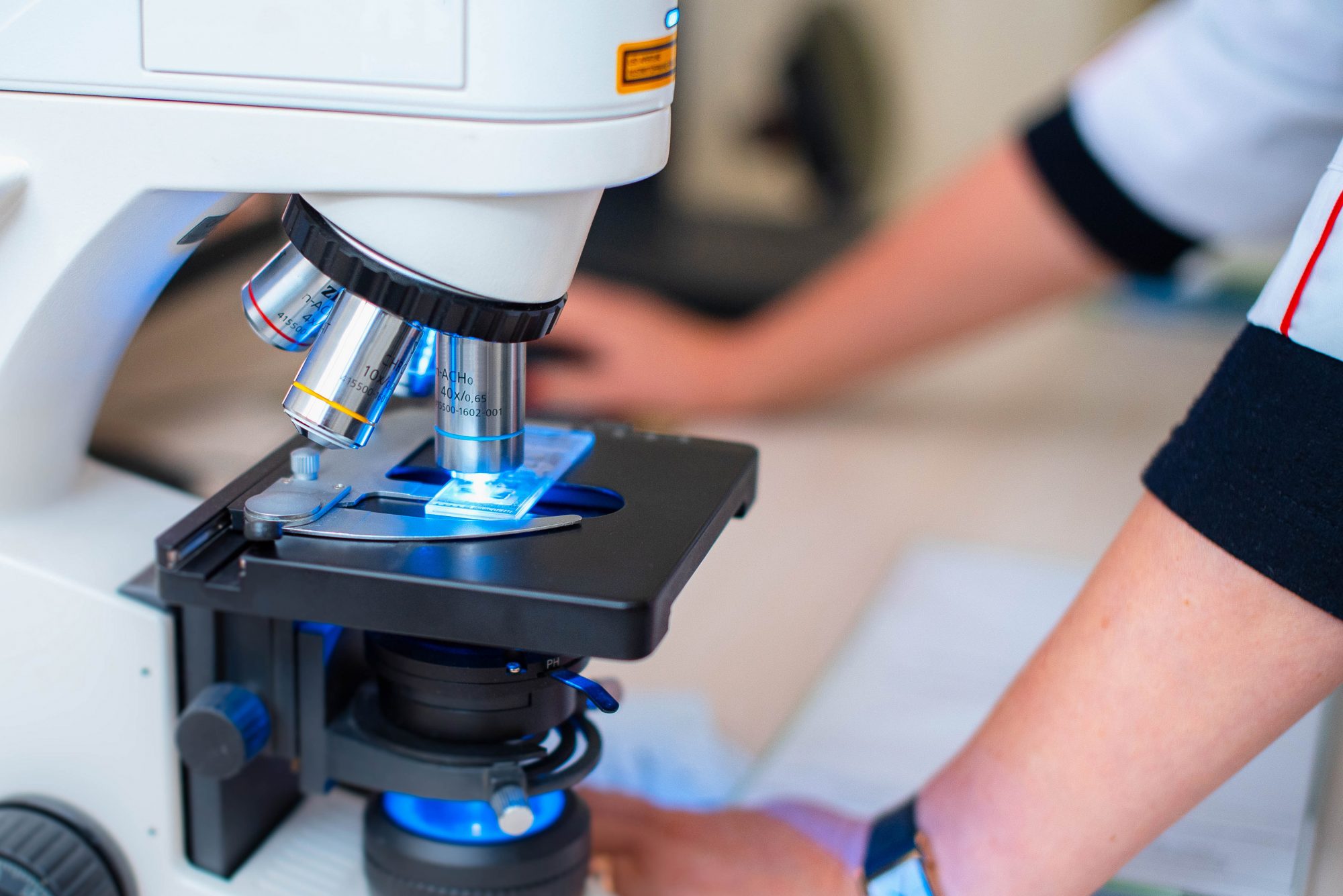
Electron microscopy (EM) is a strategy for getting high goal pictures of organic and non-natural instances. It is utilized in biomedical exploration to analyze the nitty-gritty pattern of tissues, cells, organelles, and macromolecular buildings; a primary goal of EM pictures is the utilization of electrons (with exceptionally short frequencies) as the wellspring of enlightening radiation. Electron microscopy is utilized to assortment subordinate procedures (for example, flimsy separating, immuno-naming, negative staining) to address detailed inquiries. EM pictures give critical data on the underlying premise of cell work and of cell infection. There are two elementary sorts of electron magnifying instruments- the transmission EM (TEM) and the scanning EM (SEM). The transmission electron magnifying lens is utilized to see neat illustrations (tissue areas, atoms, and so on) through which electrons can pass, generating a projection picture.
Over the most recent twenty years, another indicator, SDD advancement and depicts improvements in count rate capacity, energy resolution, and detector geometry that bring to SEM microanalysis extraordinary rigour and cohesion, the silicon drift detector (SDD), has surpassed prior Si(Li) innovation and has made EDS in the SEM and TEM quicker and better.
Scanning Electron microscope preventative maintenance
Semtech solutions PM Procedure is intended to incorporate significant checks and action items that improve execution and keep the SEM working at top levels. These PMs comprise three important regions:
- Electron-optical column service
- Electronics service
- Vacuum components service
Key Benefits:
- The PM is a thorough assistance program to guarantee the ideal execution of the tool.
- The assistance strategy can be planned for three or half-year spans, relying upon the throughput and application of the tool.
- The PM system can give away to distinguish potential issues at the earliest stage and help to limit costly downtime.
- Electron Microscope Advantages
The essential benefit is its impressive amplification.
The potential runs various logical fields, including science, gemology, clinical and scientific sciences, metallurgy, and nanotechnologies.

EMs likewise have diverse innovative and mechanical applications, like semiconductor investigation, microprocessor fabricating, quality control, and can even be utilized as a feature of a creation line.
Electron Microscope Disadvantages
The principal hindrances have cost, size, support, specialist preparation, and picture relics coming about because of example readiness.
This magnifying lens is an enormous, awkward, costly piece of hardware, very touchy to vibration and attractive outer fields.
It should be kept in space sufficiently enormous to contain the magnifying lens just as secure and stay away from any random effect on the electrons.
Upkeep involves keeping up stable voltage supplies, flows to electromagnetic loops/focal points, and a course of cool water, so the precedents are not harmed or obliterated from heat emitted during the way toward empowering the electrons.
Uncommon preparation is needed to become familiar with the elaborate cycles of example, readiness, limit and perceive planning-related curios, and work the magnifying instrument itself.
What arrangements are accessible to address these issues?
There are multiple answers for each kind of ecological commotion, with a fluctuation as far as cost, intricacy, and time needed to execute. Luckily, there are some standard techniques specialists can utilize when moving toward how to dispose of the undesirable natural ruckus:
Picking a different location: while not generally an alternative, this arrangement can be the most affordable and time-consuming way to deal with tending to commotion issues. A site review will be expected to perform estimations in all labs accessible and advantageous for the scientist when this choice is thought of. Contrasting this information and choosing the area with the most reduced clamour profile accomplishes the objective of the specialist for the sole expense of a site review.
Eliminating the noise source: decoupling the commotion source from the lab is regular when parchment siphons or chillers are making clamour in the room as scientists intend to find these things in a close-by room or capacity wardrobe. This methodology gives a straightforward and accessible answer for tending to the commotion issue; however, the restricting element uses these while decoupling the clamour source from the room, just as having space to know the disturbance source close by.
Confining the noise source: this choice generally fluctuates by the kind of commotion influencing the region for specific models, including setting Sorbothane under vibration, creating gear or committed acoustic nooks for siphons and chillers. These arrangements can help limit its effect on the instrument being referred to and possibly different tools in the lab; however, it doesn’t affect the mechanism if another commotion source is acquainted with the lab.
Conclusion
TEM is harder to immerse as they produce a gigantic measure of heat and have severe heat variety prerequisites. But, on the other hand, it possesses the tendency of fenced-in acoustic areas that can adequately confine acoustic commotion while overseeing temperature changes, which are a couple of years away. The most well-known provision is to treat the lab room with acoustic boards to help to lessen the acoustic energy as it experiences the multifaceted, variable thickness boards.